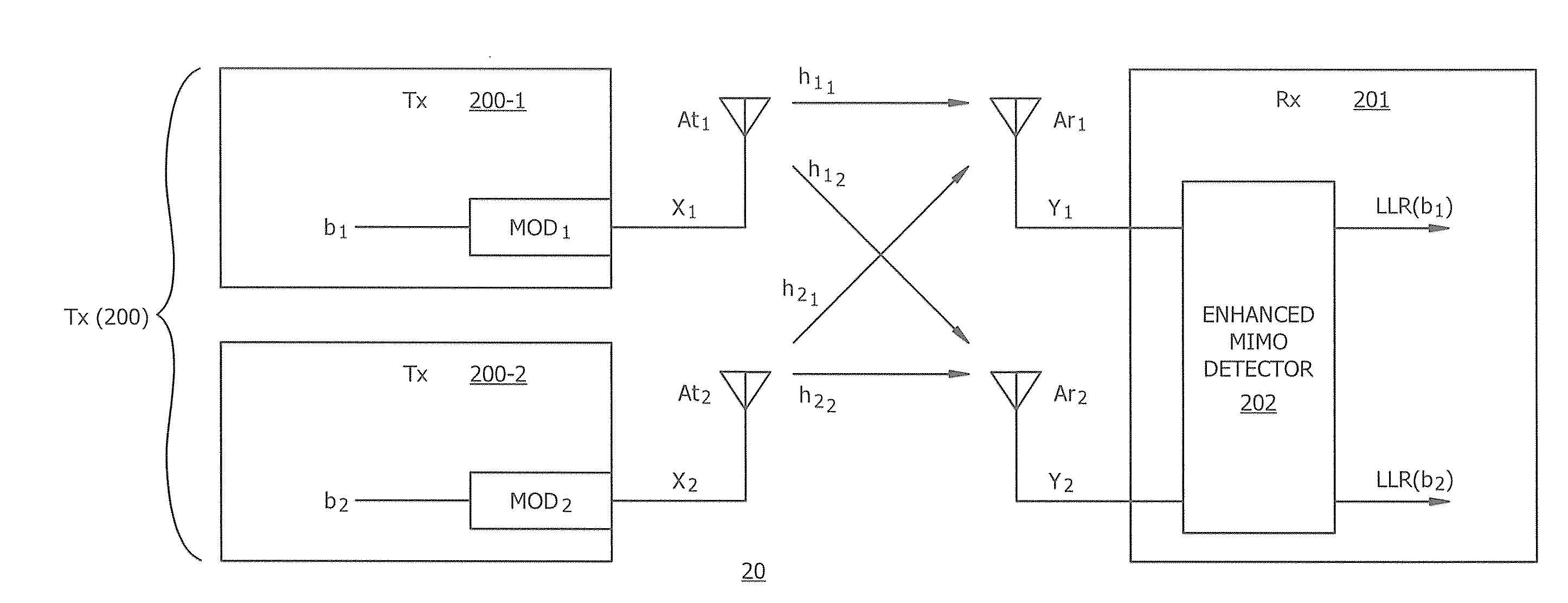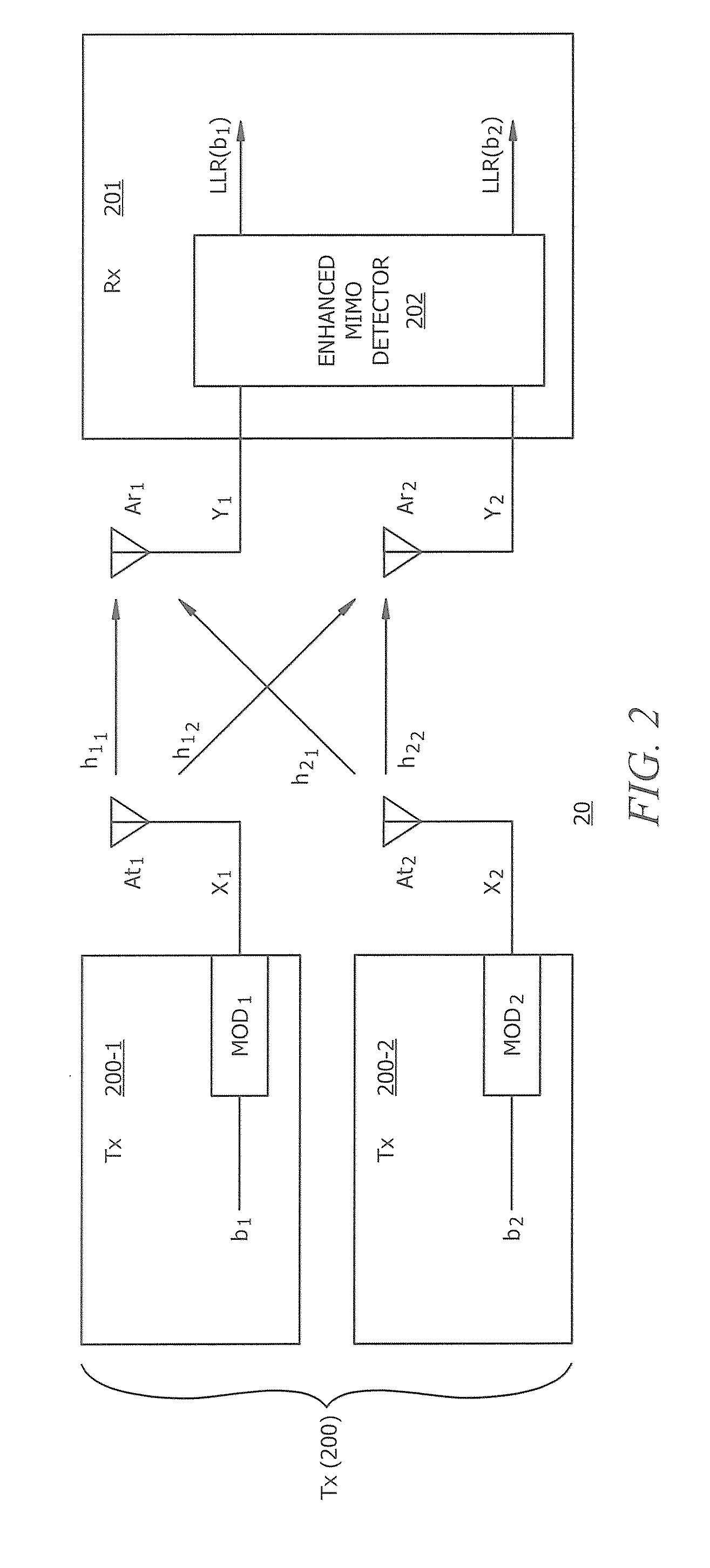Multiple antenna spatial multiplexing optimal detection
a multi-antenna and optimal detection technology, applied in diversity/multi-antenna systems, amplitude demodulation, baseband system details, etc., can solve the problem of increasing the computational complexity of the applicable receiver, adding a great deal of complexity to any mimo system, and high cost for an optimal solution
- Summary
- Abstract
- Description
- Claims
- Application Information
AI Technical Summary
Benefits of technology
Problems solved by technology
Method used
Image
Examples
Embodiment Construction
[0026]FIG. 2 is a block diagram illustrating spatial multiplexing MIMO wireless system 20 configured according to one embodiment of the present teachings. Transmitter 200 and receiver 201 are each configured with an antenna array made up of two antenna each, at1 and at2, for transmitter 200, and ar1 and ar2, for receiver 201. The antenna array, as well as the transmission functionality of transmitter 200, is split between two separate devices, transmitter 200-1 and transmitter 200-2, with antenna at1 residing on transmitter 200-1 and antenna at2 residing on transmitter 200-2. This 2×2 antenna array configuration provides a special case MIMO set up in the operation of the described embodiment of the MASMOD, i.e., a dual antenna spatial multiplexing optimal detection (DASMOD) system. In operation, the 2×2 configuration of transmitter 200 and receiver 201 operate in a similar general manner to that of transmitter 100 and receiver 102 of FIG. 1, with the exception of the number of anten...
PUM
 Login to View More
Login to View More Abstract
Description
Claims
Application Information
 Login to View More
Login to View More - R&D
- Intellectual Property
- Life Sciences
- Materials
- Tech Scout
- Unparalleled Data Quality
- Higher Quality Content
- 60% Fewer Hallucinations
Browse by: Latest US Patents, China's latest patents, Technical Efficacy Thesaurus, Application Domain, Technology Topic, Popular Technical Reports.
© 2025 PatSnap. All rights reserved.Legal|Privacy policy|Modern Slavery Act Transparency Statement|Sitemap|About US| Contact US: help@patsnap.com



